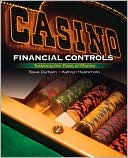Category Books
- Fiction Books & Literature
- Graphic Novels
- Horror
- Mystery & Crime
- Poetry
- Romance Books
- Science Fiction & Fantasy
- Thrillers
- Westerns
- Ages 0-2
- Ages 3-5
- Ages 6-8
- Ages 9-12
- Teens
- Children's Books
- African Americans
- Antiques & Collectibles
- Art, Architecture & Photography
- Bibles & Bible Studies
- Biography
- Business Books
- Christianity
- Computer Books & Technology Books
- Cookbooks, Food & Wine
- Crafts & Hobbies Books
- Education & Teaching
- Engineering
- Entertainment
- Foreign Languages
- Game Books
- Gay & Lesbian
- Health Books, Diet & Fitness Books
- History
- Home & Garden
- Humor Books
- Judaism & Judaica
- Law
- Medical Books
- New Age & Spirituality
- Nonfiction
- Parenting & Family
- Pets
- Philosophy
- Political Books & Current Events Books
- Psychology & Psychotherapy
- Reference
- Religion Books
- Science & Nature
- Self Improvement
- Sex & Relationships
- Social Sciences
- Sports & Adventure
- Study Guides & Test Prep
- Travel
- True Crime
- Weddings
- Women's Studies
Casino Financial Controls: Tracking the Flow of Money » (New Edition)

Authors: Steve Durham
ISBN-13: 9780131748095, ISBN-10: 0131748092
Format: Paperback
Publisher: Prentice Hall
Date Published: March 2009
Edition: New Edition
Author Biography: Steve Durham
Book Synopsis
Every manager and supervisor must be financially literate in order to advance their career in casino management. Managing expenses, a key aspect of performance reviews for managers, relies heavily on the ability to read financial statements. Since there is cash and cash equivalents moving around the casino facility like in no other business, the need for financial literacy is critical in the casino industry. Money exchanges hands at gaming tables and at the cage. Employees assume responsibility for banks and chip racks worth thousands of dollars. Extending credit and issuing comps have a material effect on the profitability of casinos. Money is everywhere and controls must be in place to avoid theft and embezzlement. Incredibly easy-to-understand, Casino Financial Controls: Tracking the Flow of Money gives solid explanations of accounting principles as well as examples of accounting entries. Examples of procedural controls and the reasons for each control are also included and explained in pragmatic terms. The criteria for extending credit or issuing comps are used to avoid serious damage to the bottom line. In addition, pictures and illustrations are included to help the reader to better visualize the reality behind the words.
Table of Contents
Preface xiii
Acknowledgments xiv
Chapter 1 Introduction 1
The Need for Financial Controls 2
The History of Financial Controls in American Casinos 3
Harrah and Financial Controls 5
The Casino Business as a Cash Business 6
Unique Terms 7
The Importance of Hold 8
Types of Controls 8
Traditional Controls 8
Accounting Controls 9
Comp Controls 10
Credit Controls 12
Chapter 2 Terminology 14
Introduction 15
Drop 15
Modern Slots and Drop 15
TITO 17
Paid Out 18
Hold 18
Profit and Loss 18
Further Terms 19
House Advantage 20
Explaining House Advantage 20
Determining Winners 21
Random-Number Generators 23
Additional Terms 24
Chapter 3 Hold Percentage 26
Hold 27
Hold Percentage 27
Amount Wagered versus Drop 28
Drop Team 28
Fills 30
Theoretical versus Actual Hold Percentage 30
Keno, Bingo, and Racebook 31
Using the Hold Percentage as a Control 31
Cheating 34
Chapter 4 Controls in Place 37
Introduction 38
Manual Procedures 38
Public Forms of Manual Procedures 38
Manual Procedures for Dealing 39
Signatures 41
Separation of Duties 41
Multiple Employee Involvement 42
Surveillance 42
Duplicate/Triplicate Forms 43
Cash Countdowns 44
Digital Trail 44
Man Trap 44
Supervisory Oversight 44
Technology's Impact 44
Chapter 5 Paper Trail of Revenue and Payouts 49
Introduction 50
Forms 50
Fills 51
The Fill Process 52
Slot Fills 54
Credits 55
Wager Documentation 56
Keno 56
Race and Sportsbook 56
Bingo 57
Impact of Technology 58
Paper Trail Uses 59
Chapter 6 Conversion of Financial Data into Financial Statements 61
Introduction 62
Definitions 62
From the Floor to the AccountingDepartment 65
"21" 66
Cocktail Service 68
Payroll 70
Chapter 7 Analysis of Financial Statements 73
Introduction 74
Financial Statement Structure 75
Basic Statement Structure 76
Prior Year and Budget 77
Variance Analysis 79
Small Variances Add Up 81
Overstaffed or Overscheduled 82
Other Key Ratios 84
Chapter 8 Purpose and History of Comps and Credit 87
Introduction 88
Definitions 88
Comps 88
Credit 90
Markers 92
History of Comps 93
Slot Clubs 95
History of Credit 99
Chapter 9 Criteria for Issuing Credit 101
Introduction 102
Criteria for Issuing Credit 102
Income 103
Assets 103
Cash on Deposit 104
Credit 104
Marker Play 105
Repayment 107
Collections 108
Legality of Markers 110
Chapter 10 Criteria for Offering Comps 113
Introduction 114
Determining Player Worth 115
The Importance of House Advantage 115
The Importance of Average Betting 117
Comp Method 118
Slot Comps 119
Redemption 121
Method of Redemption 122
Chapter 11 Impact of Comps and Credit on Financial Results 125
Introduction 126
Transfer Pricing 126
Impact of Comps on the Profit/Loss Statement 128
Retail Method of Transfer Pricing 128
Cost Method of Transfer Pricing 128
Impact of Comps on the Receiving Department 130
Controlling Comps 131
General Methods of Control 131
Targeted Comp Amounts 133
Other Methods 134
Impact of High-Limit Play on the P/L Statement 135
Examples of the Impact of High-Limit Play 135
Chapter 12 Conclusion 139
Introduction 140
The Reason for Controls 140
Review of Key Terms 141
Financial Statements 143
Expenses 145
Conversion into Financial Information 146
Managing Comps and Credit 147
Author's Biography 151
Index 153
Subjects
 Management & Leadership
Management & Leadership  Industry Profiles - Management
Industry Profiles - ManagementGame Books
 Gambling
Gambling  Casinos
CasinosEntertainment
 Game Books
Game Books  Gambling
Gambling
